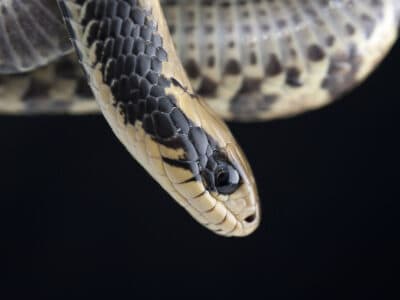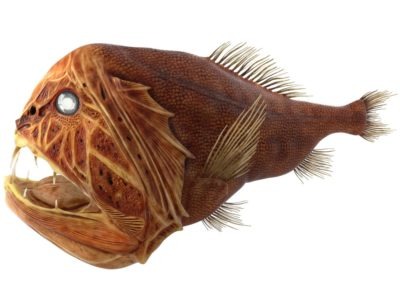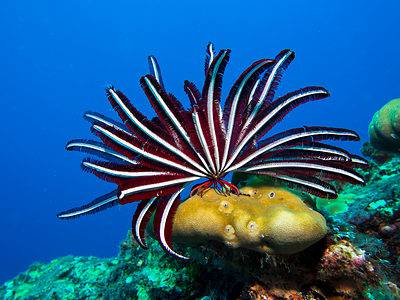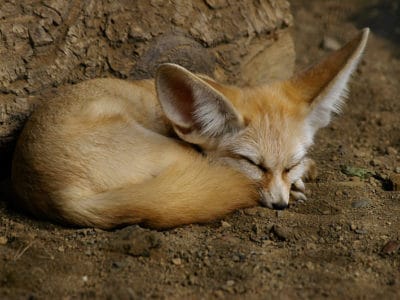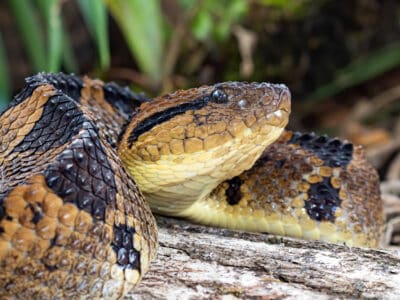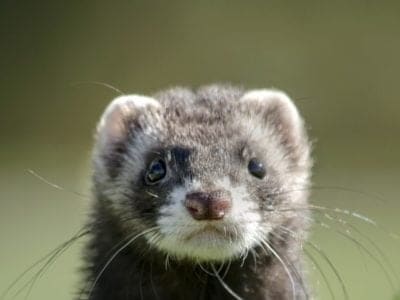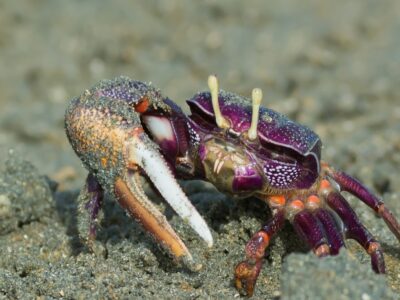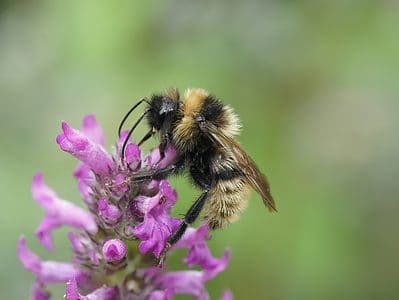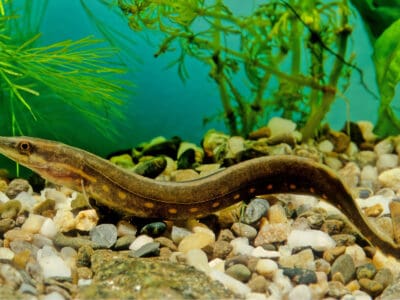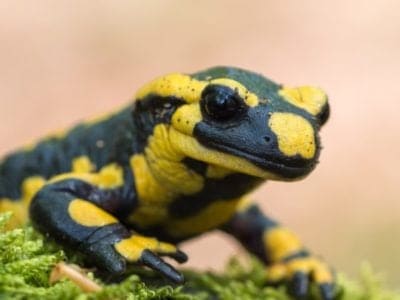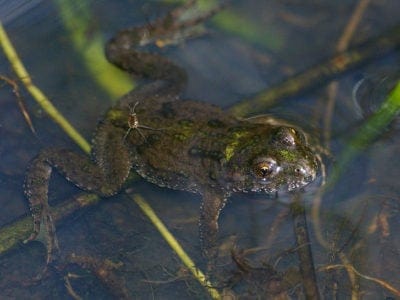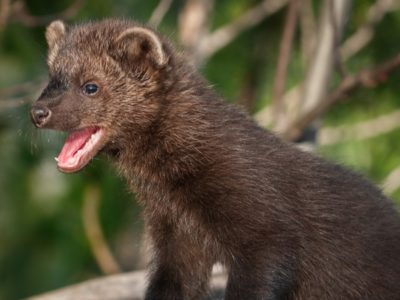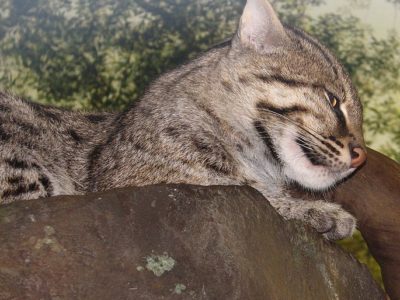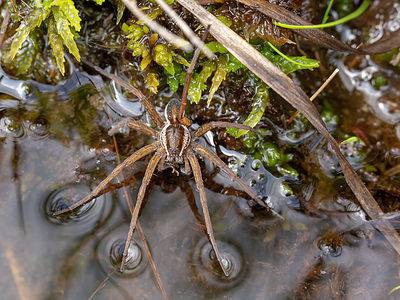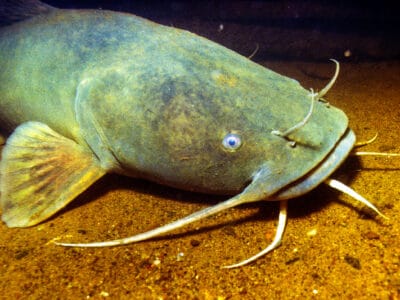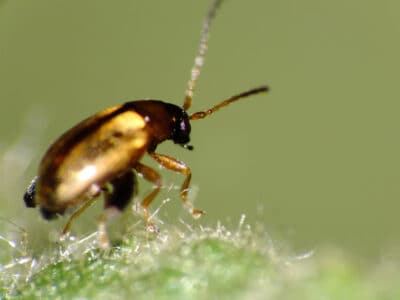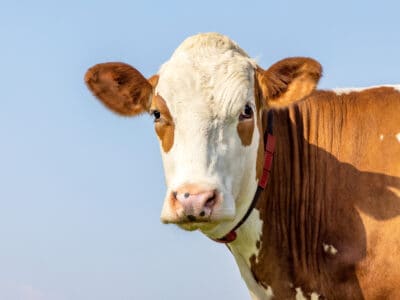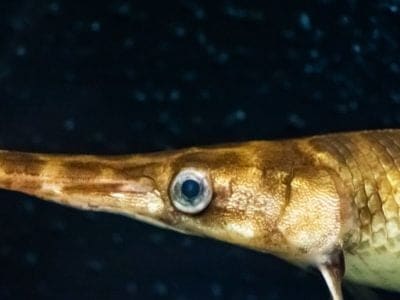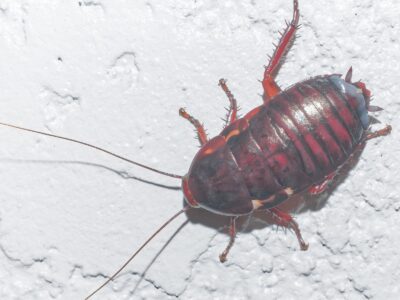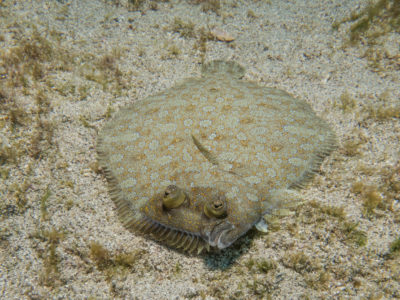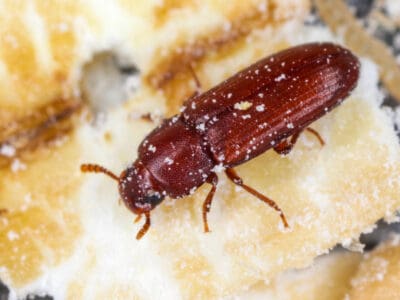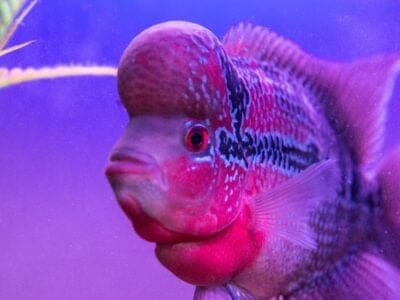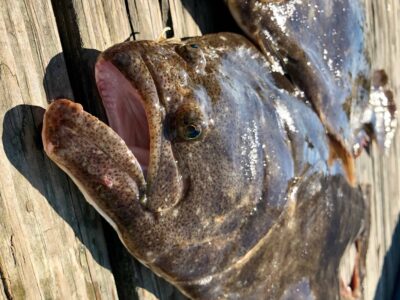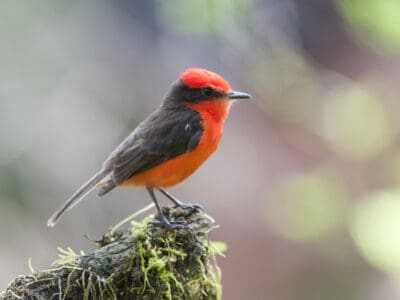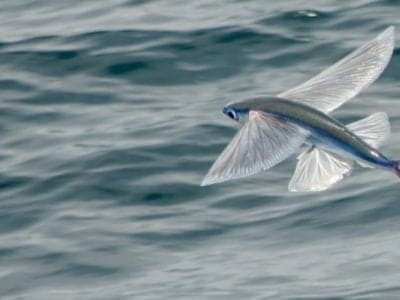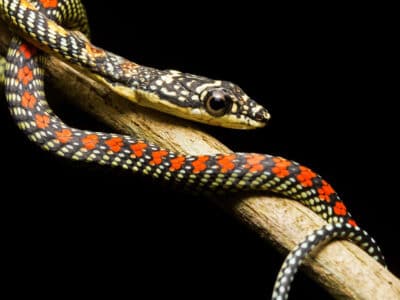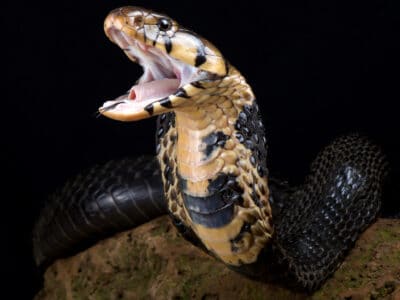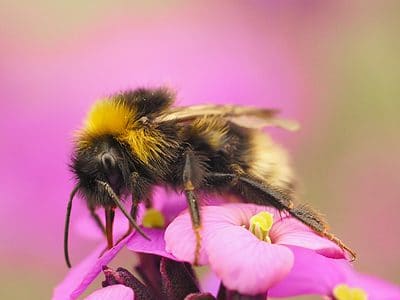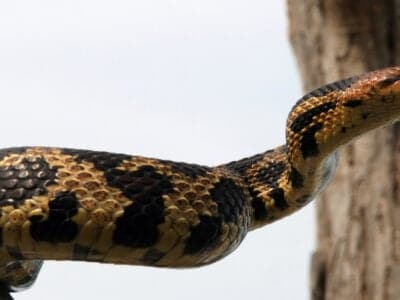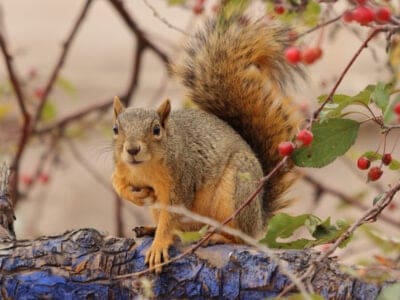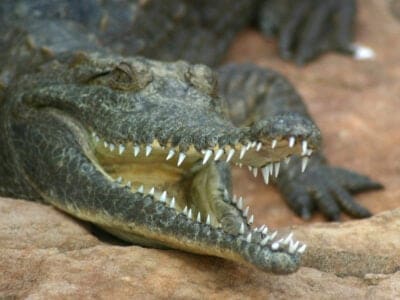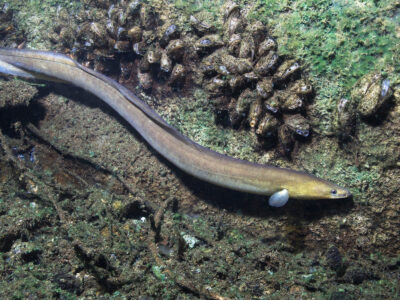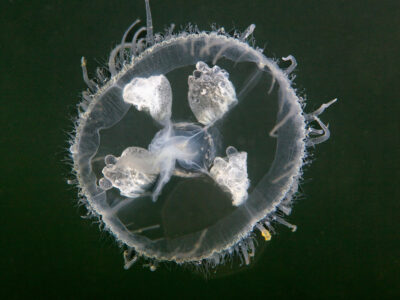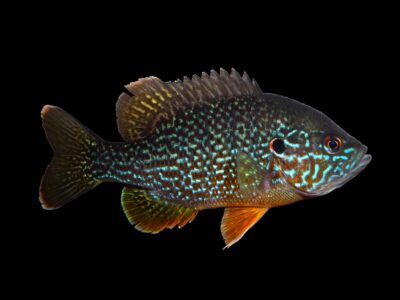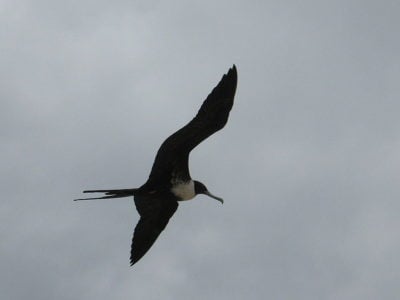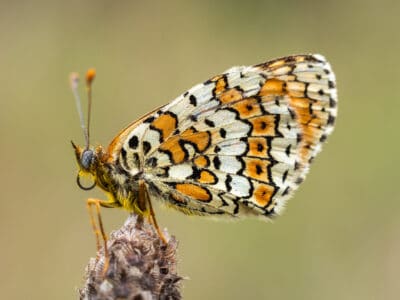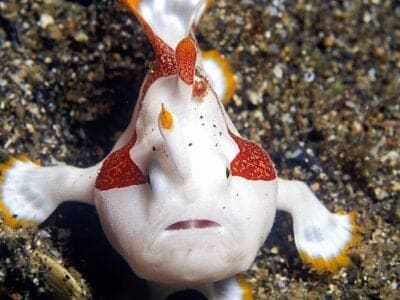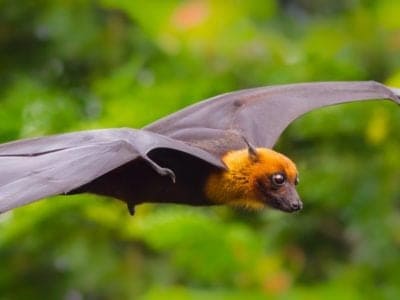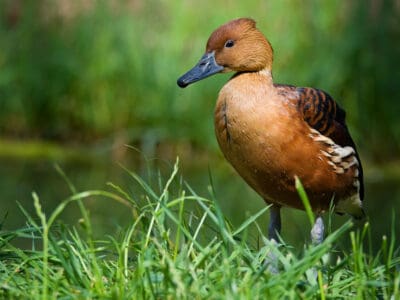Read below for information on 91 different animals that start with the letter F, from falcon to fur seal. The most popular F animal is the fennec fox, a cute nocturnal animal with exceptional hearing. The least popular is the fire bellied toad, which can appear black, green, grey, brown, yellow, orange, and red. Some fun facts about F name animals are:
- There are more than 240,000 different species of flies
- Flamingos sleep on just one leg
- The peregrine falcon is the fastest animal on earth, diving at up to 242 MPH
Jump to any letter
Alphabetical List of Animals That Start with F
- Fainting Goat
- Fairy-Wren
- Falcon
- Fallow deer
- False Cobra
- False coral snake
- False Killer Whale
- False Water Cobra
- False Widow Spider
- Fancy Mouse
- Fangtooth
- Feather Star
- Feist
- Fennec Fox
- Fer-de-lance Snake
- Ferret
- Ferruginous Hawk
- Fiddler Crab
- Field Cuckoo Bumblebee
- Field Spaniel
- Fierce Snake
- Figeater Beetle
- Fila Brasileiro
- Fin Whale
- Finch
- Finnish Lapphund
- Finnish Spitz
- Fire Ball Python
- Fire Eel
- Fire Salamander
- Fire-Bellied Toad
- Firefly
- Firefly Ball Python
- Fish
- Fisher
- Fishing Cat
- Fishing Spiders
- Flamingo
- Flat-Coated Retriever
- Flathead Catfish
- Flea
- Flea Beetle
- Fleckvieh Cattle
- Florida Gar
- Florida Mouse
- Florida Panther
- Florida Woods Cockroach
- Flounder
- Flounder Fish
- Flour Beetle
- Flowerhorn Fish
- Fluke Fish (summer flounder)
- Fly
- Flycatcher
- Flying Fish
- Flying Lemur
- Flying Snake
- Flying Squirrel
- Football Fish
- Forest Cobra
- Forest Cuckoo Bumblebee
- Formosan Mountain Dog
- Fossa
- Fox
- Fox Snakes
- Fox Squirrel
- Fox Terrier
- Freeway Ball Python
- French Bulldog
- French Bulldog Mix
- French Lop
- Frenchton
- Frengle
- Freshwater Crocodile
- Freshwater Drum
- Freshwater Eel
- Freshwater Jellyfish
- Freshwater Sunfish
- Frigatebird
- Frilled Lizard
- Frilled Shark
- Fritillary Butterfly
- Frizzle Chicken
- Frog
- Frogfish
- Frug
- Fruit Bat
- Fruit Fly
- Fulvous Whistling Duck
- Fur Seal
- Furrow Bee
Animals that Start with F
Fainting Goat
- Kingdom
- Animalia
- Phylum
- Chordata
- Class
- Mammalia
- Order
- Artiodactyla
- Family
- Bovidae
- Genus
- Capra
- Scientific Name
- Capra aegagrus hircus
Fun Fact: Frightening this goat will cause it to fall over in fear!
The fainting goat, also known as the Tennessee fainting goat, is a domestic breed of goat known for a strange mutation that causes congenital myotonia, or fainting. This reflex is caused by a genetic condition that causes the muscles to stiffen and freeze when stimulated. Although it may look painful, this condition is not harmful […] Read More
Fairy-Wren
- Kingdom
- Animalia
- Phylum
- Chordata
- Class
- Aves
- Order
- Passeriformes
- Family
- Maluridae
- Genus
- Malurus
- Scientific Name
- Malurus Splendens, Malurus cyaneus, and others
Fun Fact: They forage in groups
One of Australia’s most well-known birds. The fairy wren is well known across Australia for its striking plumage, promiscuous mating behaviors, and clever foraging tricks. Most exhibit high degrees of sexual dimorphism, and males produce vivid colors during the breeding season, which they like to show off and gain popularity amongst females. Learn about these […] Read More
Falcon
- Kingdom
- Animalia
- Phylum
- Chordata
- Class
- Aves
- Order
- Falconiformes
- Family
- Falconidae
- Genus
- Falco
Fun Fact: The fastest creatures on the planet!
The falcon bird is faster than any other animal on earth, both on land and in the air! Known for their precision and speed, the falcon bird seeks out food like any bird of prey. Falcons, rather than being one species of bird, actually include 40 different species with specific traits that make each one […] Read More
Fallow deer
- Kingdom
- Animalia
- Phylum
- Chordata
- Class
- Mammalia
- Order
- Artiodactyla
- Family
- Cervidae
- Genus
- Dama
- Scientific Name
- Dama dama
Fun Fact: The fallow deer has more variation in its coat colors than most other deer.
A person who first sees the most common type of fallow deer may wonder why it never got rid of the white spots other deer have when they’re fawns then lose as they grow up. But a spotted, light brown coat with a black stripe that runs down the back to the tail is just […] Read More
False Cobra
- Kingdom
- Animalia
- Phylum
- Chordata
- Class
- Reptilia
- Order
- Squamata
- Family
- Lamprophiidae
- Genus
- Malpolon
- Scientific Name
- Malpolon moilensis
Fun Fact: When it feels threatened, it mimics a cobra in an attempt to dissuade a potential attacker.
Pretends to be a cobra Also called the hooded malpolon or the Egyptian false cobra, this snake of the deserts and semi-deserts of the Middle East and northern Africa puts on quite a show when it’s threatened. Indeed, it has evolved to mimic the much more dangerous and much larger cobra. When it’s angry, it […] Read More
False coral snake
- Kingdom
- Animalia
- Phylum
- Chordata
- Class
- Reptilia
- Order
- Squamata
- Family
- Aniliidae
Fun Fact: The false coral snake mimics both the coral snake and the cobra to scare away predators
“The false coral snake mimics both the coral snake and the cobra to scare away predators” A false coral snake looks a lot like a coral snake but is non-venomous. Its diet consists of smaller snakes, lizards, and frogs. This snake makes its home in South America. False coral snakes are found in wetlands, forests, […] Read More
False Killer Whale
- Kingdom
- Animalia
- Phylum
- Chordata
- Class
- Mammalia
- Order
- Artiodactyla
- Family
- Delphinidae
- Genus
- Pseudorca
- Scientific Name
- Pseudorca crassidens
Fun Fact: The false killer whale looks like a cross between a dolphin and orca!
The false killer whale is a fast and agile swimmer, a peak predator, and a highly intelligent and social animal. The name obviously arises from the similarities between orcas and false killer whales. Until 1862, early taxonomists classified both species within the same genus. Despite the name, this species is sometimes mistaken for the bottle-nosed […] Read More
False Water Cobra
- Kingdom
- Animalia
- Phylum
- Chordata
- Class
- Reptilia
- Order
- Squamata
- Family
- Colubridae
- Genus
- Hydrodynastes
- Scientific Name
- Hydrodynastes gigas
Fun Fact: There are several color morphs, including lavender!
The false water cobra is a New World snake species that is also known as the Brazilian smooth snake. Its common name comes from the hood it raises like a true cobra does, although it stays horizontal rather than rearing up. Also, its colors and pattern are similar to those of the trueF water cobras […] Read More
False Widow Spider
- Kingdom
- Animalia
- Phylum
- Arthropoda
- Class
- Arachnida
- Order
- Araneae
- Family
- Theridiidae
- Genus
- Steatoda
- Scientific Name
- Steatoda grossa
Fun Fact: False spiders actually prey on black widow spiders and other hazardous spiders
With a similar dark, globular body for identification, the false widow spider is often mistaken for the black widow. While mistaken for look-alikes, they are two different spiders. Science traces the false widow’s origins to the Canary Islands and Madeira. It’s believed the creature stowed away on transatlantic trips. That’s why today, the false widow’s […] Read More
Fancy Mouse
- Kingdom
- Animalia
- Phylum
- Chordata
- Class
- Mammalia
- Order
- Rodentia
- Family
- Muridae
- Genus
- Mus
- Scientific Name
- Mus musculus domestica
Fun Fact: Fancy mice are beloved pets with a history of domestication spanning thousands of years!
Fancy mice are beloved pets with a history of domestication spanning thousands of years! The fancy mouse is the domesticated subspecies of the house mouse, which is found all over the world. Fancy mice have been selectively bred by humans for hundreds, perhaps even thousands of years. These small rodents are relatively easy to keep […] Read More
Fangtooth
- Kingdom
- Animalia
- Phylum
- Chordata
- Class
- Actinopterygii
- Order
- Beryciformes
- Family
- Anoplogastridae
- Genus
- Anoplogaster
- Scientific Name
- Anoplogaster spp.
Fun Fact: Has the largest teeth compared to body size of any known fish!
Fangtooth fish live in the deep sea in a region known as “the midnight zone.” The fangtooth is a carnivorous fish that lives in the deep sea. These fish have grotesquely huge jaws with enormous, protruding fangs, and they prey on smaller fish and crustaceans as well as much larger fish and even squids. It […] Read More
Feather Star
- Kingdom
- Animalia
- Phylum
- Echinodermata
- Class
- Crinoidea
- Order
- Comatulida
Fun Fact: Feather stars look like flowers. They have no heart, eyes, or brain.
Feather stars look like flowers. They have no heart, eyes, or brain. Feather Star Facts Feather stars eat with their feet. They have sticky mucus that helps them catch their microscopic prey before flinging into their mouths.Feather stars are considered to be one of the most amazing and unique sea creatures because they look like […] Read More
Feist
- Kingdom
- Animalia
- Phylum
- Chordata
- Class
- Mammalia
- Order
- Carnivora
- Family
- Canidae
- Genus
- Canis
- Scientific Name
- Canis lupus
Fun Fact: The word feisty derived from this type of dog.
It’s thought that the word feisty was derived from the Feist’s excitable temperament. The Feist dog breed is a small hunting dog that arose in the American south at some point in the 18th century. The name of the species probably derives from the obsolete word fice or fyst, which means to break wind. This […] Read More
Fennec Fox
- Kingdom
- Animalia
- Phylum
- Chordata
- Class
- Mammalia
- Order
- Carnivora
- Family
- Canidae
- Genus
- Vulpes
- Scientific Name
- Vulpes zerda
Fun Fact: Found in the African Sahara Desert!
Classification and Evolution The fennec fox is a small species of fox found in the deserts of North Africa. They are the smallest canine species but have the largest ears relative to their body size which are used to both aid their hearing and to help them to control their body temperature in the hostile […] Read More
Fer-de-lance Snake
- Kingdom
- Animalia
- Phylum
- Chordata
- Class
- Reptilia
- Order
- Squamata
- Family
- Viperidae
- Genus
- Bothrops
- Scientific Name
- B. asper, B. atrox, B. lanceolatus
Fun Fact: The Most Dangerous Snake in the Americas
“The Most Dangerous Snake in the Americas” Camouflage helps these snakes hide from potential prey as well as potential predators, but it also hides them from barefoot people out for a walk. Like many snakes, this pit viper’s mind is being stepped on, and while it may start to move away from the offending foot, […] Read More
Ferret
- Kingdom
- Animalia
- Phylum
- Chordata
- Class
- Mammalia
- Order
- Carnivora
- Family
- Mustelidae
- Genus
- Mustela
- Scientific Name
- Mustela furo
Fun Fact: Ferrets can be trained to do tricks like dogs!
The ferret is a small domesticated mammal in the weasel family Mustelidae whose name comes from the Latin word furittus meaning “little thief.” If you’ve ever heard of someone “ferreting away” or “ferreting out” something, it’s thanks to the ferret’s curious and hoarding behavior in which it finds and hides items. The domestication of this […] Read More
Ferruginous Hawk
- Kingdom
- Animalia
- Phylum
- Chordata
- Class
- Aves
- Order
- Accipitriformes
- Family
- Accipitridae
- Genus
- Buteo
- Scientific Name
- Buteo regalis
Fun Fact: The ferruginous hawk comes in both light and dark morphs
The ferruginous hawk is among the top predators, soaring majestically with its wings outstretched over the open plains of western North America. The name of the hawk is derived from the Latin word ferrum for iron. This refers to the rusted iron color of the hawk’s feathers. Their unique color pattern, their large size, and […] Read More
Fiddler Crab
- Kingdom
- Animalia
- Phylum
- Arthropoda
- Class
- Malacostraca
- Order
- Decapoda
- Family
- Ocypodidae
Fun Fact: The fiddler crab gets its name from the motion the males make with their over-sized claw during the mating ritual.
The fiddler crab is one of over 100 species of crabs that live on both land and sea. Most often found along intertidal areas of lagoons and mudflats, they can also be found on sandy beaches. While some tolerate saltwater, most prefer brackish water along the intercoastal areas. 4 Incredible Fiddler Crab Facts! The fiddler […] Read More
Field Cuckoo Bumblebee
- Kingdom
- Animalia
- Phylum
- Arthropoda
- Class
- Insecta
- Order
- Hymenoptera
- Family
- Apidae
- Genus
- Bombus
- Scientific Name
- Bombus campestris
Fun Fact: N/A
Field cuckoo bumblebees (Bombus campestris) are common and widespread throughout Europe. These cuckoo bumblebees lay their eggs in the nests of other bumblebees. This is why they are called cuckoos! They share their name with birds in the family Cuculidae. Cuckoo birds lay their eggs in the nests of different species, often to the detriment […] Read More
Field Spaniel
- Kingdom
- Animalia
- Phylum
- Chordata
- Class
- Mammalia
- Order
- Carnivora
- Family
- Canidae
- Genus
- Canis
- Scientific Name
- Canis Lupus
Fun Fact: A sociable and adaptable breed!
This breed makes an excellent family pet. In the late 1800s, dog shows become more popular in England. This led to breeders create more distinct breeds and types of dogs. The Field Spaniel is a mix of Cocker Spaniels, English Springer Spaniels, and Sussex Spaniels. These dogs made a great companion on a hunting trip, […] Read More
Fierce Snake
- Kingdom
- Animalia
- Phylum
- Chordata
- Class
- Reptilia
- Order
- Squamata
- Family
- Elapidae
- Genus
- Oxyuranus
- Scientific Name
- Oxyuranus microlepidotus
Fun Fact: It can kill multiple humans with the amount of venom it releases in one bite.
The fierce snake, which is also known as the small-scaled snake or the inland taipan, is incredibly venomous, and it can kill multiple humans with the amount of venom it releases in one bite. It prefers a semi-arid habitat where it lays up to 24 eggs, depending on the amount of food that they eat. […] Read More
Figeater Beetle
- Kingdom
- Animalia
- Phylum
- Arthropoda
- Class
- Insecta
- Order
- Coleoptera
- Family
- Scarabaeidae
- Genus
- Cotinis
- Scientific Name
- Cotinis mutabilis
Fun Fact: Figeater beetles only open their wings partially when they fly.
Figeater beetles only open their wings partially when they fly. Summary The figeater beetle is a type of scarab beetle native to North America. The beetle is most common in the southwestern region of the United States and Mexico. These brightly colored beetles are diurnal, i.e., more active during the day than at night. They […] Read More
Fila Brasileiro
- Kingdom
- Animalia
- Phylum
- Chordata
- Class
- Mammalia
- Order
- Carnivora
- Family
- Canidae
- Genus
- Canis
- Scientific Name
- Canis lupus
Fun Fact: The breed has a unique, cat-like gait, while females have a finer gait than males.
This breed is often on banned, aggressive, or dangerous dog breed lists due to attacks toward strange people and dogs. The Fila Brasileiro is a rare, large dog breed also known as the Brazilian Mastiff or Brazilian Molosser. Its original purpose was to catch runaway slaves when slavery was legal in Brazil. It has also […] Read More
Fin Whale
- Kingdom
- Animalia
- Phylum
- Chordata
- Class
- Mammalia
- Order
- Cetacea
- Family
- Balaenopteridae
- Genus
- Balaenoptera
- Scientific Name
- Balaenoptera Physalus
Fun Fact: Found throughout ocean waters worldwide!
The fin whale is one of the largest animals to ever exist on the earth. Residing deep within the world’s great oceans, the fin whale cuts a majestic figure as it glides effortlessly through the water. Despite their enormous size, these whales are fast and agile swimmers that have adapted supremely well to their aquatic […] Read More
Finch
- Kingdom
- Animalia
- Phylum
- Chordata
- Class
- Aves
- Order
- Passeriformes
- Family
- Fringillidae
Fun Fact: Finches have strong, conical bills that help them break open tough seeds that many other birds cannot.
Finches have strong, conical bills that help them break open tough seeds! What is a finch? That question has perplexed scientists for decades. It has only gotten more difficult to answer as groups of birds have been moved from one family to another based on DNA analyses since the 1990s. Small, usually colorful birds with […] Read More
Finnish Lapphund
- Kingdom
- Animalia
- Phylum
- Chordata
- Class
- Mammalia
- Order
- Carnivora
- Family
- Canidae
- Genus
- Canis
- Scientific Name
- Canis lupus
Fun Fact: The Finnish Lapphund was bred to herd reindeer!
The Sami bred the Finnish Lapphund to herd reindeer! Introduction The Finnish Lapphund is an ancient hunting and herding dog bred by the Sami people in the Lapland region of Scandinavia. Remains of dogs from this area date back almost 7,000 years. The dogs traveled with this nomadic tribe, hunting reindeer. As they gave up […] Read More
Finnish Spitz
- Kingdom
- Animalia
- Phylum
- Chordata
- Class
- Mammalia
- Order
- Carnivora
- Family
- Canidae
- Genus
- Canis
- Scientific Name
- Canis lupus
Fun Fact: Likes to bark a lot!
This medium-size breed makes a good family dog and is very friendly and playful. Origin and History Finnish Spitzes are believed to have originated from the spitz dogs brought from central Russia by migrants who moved to present-day Finland about 3,000 years ago. Originally bred to hunt game, they are also good companions for other […] Read More
Fire Ball Python
- Kingdom
- Animalia
- Phylum
- Chordata
- Class
- Reptilia
- Order
- Squamata
- Family
- Pythonidae
- Genus
- Python
- Scientific Name
- Python regius
Fun Fact: The fire ball python morph is known for its rich golden and reddish-brown coloration.
“The fire ball python morph stands out thanks to its light golden to reddish-brown patterning.” Fire Ball Python Summary Since the early 1990s, thousands of unique ball python morphs have been developed through selective captive breeding. Most of these morphs, such as the fire variety, are color morphs. This simply means experts breed them to […] Read More
Fire Eel
- Kingdom
- Animalia
- Phylum
- Chordata
- Class
- Actinopterygii
- Order
- Synbranchiformes
- Family
- Mastacembelidae
- Genus
- Mastacembelus
- Scientific Name
- Mastacembelus erythrotaenia
Fun Fact: Fire Eels are not true eels.
Called an eel for its long thin appearance, a Fire Eel actually isn’t a true eel at all. In fact, it is one of a species of elongated freshwater fish with pointy snouts known as spiny eels. These fish are popular aquarium pets because of their unusual color and size. These nocturnal, bottom-dwelling fish have […] Read More
Fire Salamander
- Kingdom
- Animalia
- Phylum
- Chordata
- Class
- Amphibia
- Order
- Urodela
- Family
- Salamandridae
- Genus
- Salamandra
Fun Fact: Its name comes from the fact that people once believed it was born in fire
The fire salamander is the best-known salamander in Europe and a common species of salamander in Central and Southern Europe. As a middle to large-sized and strongly built salamander, it is so well-known not only due to its prevalence but bright warning colors and poisonous liquid spray. Its name comes from the old belief that […] Read More
Fire-Bellied Toad
- Kingdom
- Animalia
- Phylum
- Chordata
- Class
- Amphibia
- Order
- Anura
- Family
- Bombinatoridae
- Genus
- Bombina
- Scientific Name
- Bombina
Fun Fact: Found across mainland Europe and Asia!
“The croak of a fire-bellied toad sounds a lot like a dog barking.” The fire-bellied toad lives in northeastern parts of China, North Korea, South Korea and parts of Russia. This toad has an underbelly made up of bright red/orange and black splotches. An adult toad measures about 2 inches long. Though they only eat […] Read More
Firefly
- Kingdom
- Animalia
- Phylum
- Arthropoda
- Class
- Insecta
- Order
- Coleoptera
- Family
- Lampyridae
- Scientific Name
- Lampyridae
Fun Fact: The firefly produces some of the most efficient light in the world
“The firefly is a family of light-emitting insects. They produce light through a chemical reaction of oxygen, calcium, energy, and a light-emitting molecule called luciferin.“ Fireflies are some of the most popular and beloved insects in the world. Basically, all firefly larvae can produce light, but many species lose this ability in adulthood. Only a […] Read More
Firefly Ball Python
- Kingdom
- Animalia
- Phylum
- Chordata
- Class
- Reptilia
- Order
- Squamata
- Family
- Pythonidae
- Genus
- Python
- Scientific Name
- Python regius
Fun Fact:
Firefly Ball Python Summary “Mainly electric yellow and almost jet black in color, the firefly ball python morph is stunningly bright and bold with extremely clean, defined markings.” Even out of thousands of colorful and unique ball python morphs on the market, the firefly morph manages to be one of the boldest and brightest of […] Read More
Fish
- Kingdom
- Animalia
- Phylum
- Chordata
Fun Fact: Respire through the gills on their heads!
Fish are found in every ocean, lake, river and stream in all corners of the globe, in many sizes, colours and species. Most fish (depending on size) tend to eat plankton in the water, insects and smaller fish. Fish respire through gills in the sides of their heads, allowing the fish to breath underwater. Fish […] Read More
Fisher
- Kingdom
- Animalia
- Phylum
- Chordata
- Class
- Mammalia
- Order
- Carnivora
- Family
- Mustelidae
- Genus
- Pekania
- Scientific Name
- Pekania pennanti
Fun Fact: The fisher is an agile climber and makes its home in tree hollows.
The fisher is secretive and difficult to find; many misconceptions about them still thrive. These misconceptions begin with the name itself: the fisher, sometimes called a “fisher cat,” is not a cat at all, but a mammal belonging to the same family as the weasel. It also does not eat fish of any kind. Instead, […] Read More
Fishing Cat
- Kingdom
- Animalia
- Phylum
- Chordata
- Class
- Mammalia
- Order
- Carnivora
- Family
- Felidae
- Genus
- Prionailurus
- Scientific Name
- Prionailurus viverrinus
Fun Fact: Scoops fish out of the water using it's paw!
The Fishing Cat is a small to medium-sized feline that is natively found throughout a number of countries in Southeast Asia. Unlike other cat species found around the world (with the notable exception of the Jaguar) the Fishing Cat spends most of its life in areas of dense vegetation close to the water and is […] Read More
Fishing Spiders
- Kingdom
- Animalia
- Phylum
- Arthropoda
- Class
- Arachnida
- Order
- Araneae
- Family
- Pisauridae
- Genus
- Dolomedes
Fun Fact: Fishing spiders have hydrophobic hair on their skin that allows them to survive on water
Fishing spiders are part of the genus Dolomedes and are found near water sources such as ponds, lakes, and streams. They get their name from their hunting behavior; they sit on the edge of a body of water and wait for prey to come close enough to snatch it up with their long, powerful legs. […] Read More
Flamingo
- Kingdom
- Animalia
- Phylum
- Chordata
- Class
- Aves
- Order
- Phoenicopteriformes
- Family
- Phoenicopteridae
- Genus
- Phoenicopterus
Fun Fact: Sleeps on just one leg!
“A flamingo’s feathers don’t turn pink until it reaches 2 or 3 years old” Flamingos are omnivorous birds that eat brine shrimp, algae, and snails. They live in large groups called colonies. These birds reside in tropical climates in regions of Africa, Asia, and around South America. This bird can have a wingspan as wide […] Read More
Flat-Coated Retriever
- Kingdom
- Animalia
- Phylum
- Chordata
- Class
- Mammalia
- Order
- Carnivora
- Family
- Canidae
- Genus
- Canis
- Scientific Name
- Canis lupus
Fun Fact: A game retrieving gun-dog!
The Flat-Coated Retriever has a very happy and outgoing temperament. Origin and History Flat-Coated Retrievers are a large dog breed that may be black or liver-colored in appearance which makes a great family pet and is great with children. They always seem to be happy and are coined the “Peter Pan” of the dog world! […] Read More
Flathead Catfish
- Kingdom
- Animalia
- Phylum
- Chordata
- Class
- Actinopterygii
- Order
- Siluriformes
- Family
- Ictaluridae
- Genus
- Pylodictis
- Scientific Name
- Pylodictis olivaris
Fun Fact: The only predators that prey on flathead catfish are members of their own species and humans who catch them for commercial and recreational purposes.
The flathead catfish is a large common species that is definitely not known for its looks. They are freshwater catfish, and fishermen often hook large specimens that put up a tough fight. These catfish play a role in commercial and recreational use and can be a decent meal if fished from a clean environment. Flathead […] Read More
Flea
- Kingdom
- Animalia
- Phylum
- Arthropoda
- Class
- Insecta
- Order
- Siphonaptera
Fun Fact: Adult fleas can jump up to 7 inches in the air
Fleas are tiny blood-sucking insects that live on the external body of a host. They are a constant annoyance for cat and dog owners; more than a billion dollars is spent every year on treatment. While their bites generally cause nothing more than itching and pain, they have been known to transmit diseases to people. […] Read More
Flea Beetle
- Kingdom
- Animalia
- Phylum
- Arthropoda
- Class
- Insecta
- Order
- Coleoptera
- Family
- Chrysomelidae
Fun Fact: Flea beetles can jump like fleas when threatened.
Insects in the subfamily Alticinae are commonly referred to as flea beetles. They’re among the smallest beetles in the world and are found worldwide in various habitats. Insects in this group are characterized by their ability to jump like fleas. Despite their tiny sizes, they are considered major pests in gardens. Both adult and larvae […] Read More
Fleckvieh Cattle
- Kingdom
- Animalia
- Phylum
- Chordata
- Class
- Mammalia
- Order
- Artiodactyla
- Family
- Bovidae
- Genus
- Bos
- Scientific Name
- Bos taurus taurus
Fun Fact: Besides being bred for milk and meat, these cattle were also used as draft oxen.
Fleckvieh cattle serve a dual purpose and are raised for their meat and milk production. They became popular in the 19th century and originated in Austria, but now can be found all across Europe, the USA, and certain parts of South America. These cattle result from cross-breeding native stock with Simmental cattle native to Switzerland […] Read More
Florida Gar
- Kingdom
- Animalia
- Phylum
- Chordata
- Class
- Actinopterygii
- Order
- Lepisosteiformes
- Family
- Lepisosteidae
- Genus
- Lepisosteus
- Scientific Name
- Lepisosteus platyrhincus
Fun Fact: The Florida gar has toxic eggs to protect against predators
The Florida gar is among the most ancient and unique freshwater fish of North America. It is not necessarily the most popular type of fish, however, since the commercial market for gar meat is relatively small, and even among recreational fishers, it’s more of a niche catch. But for the people who know about it, […] Read More
Florida Mouse
- Kingdom
- Animalia
- Phylum
- Chordata
- Class
- Mammalia
- Order
- Rodentia
- Family
- Cricetidae
- Genus
- Podomys
- Scientific Name
- Podomys floridanus
Fun Fact: It is the only mammal native to the state of Florida.
Florida Mouse Summary The Florida mouse is a nocturnal rodent of the family Cricetidae found in the United States in central Florida and within the panhandle. It is the only species in the genus Podomys and the only mammal native to Florida. The Florida mouse resides in some of the sparsest and dryest land of […] Read More
Florida Panther
- Kingdom
- Animalia
- Phylum
- Chordata
- Class
- Mammalia
- Order
- Carnivora
- Family
- Felidae
- Genus
- Puma
- Scientific Name
- Puma concolor couguar
Fun Fact: Florida panthers can leap more than 4.5 meters (15 feet) in the air.
The Florida panther is the only member of the puma family known to breed in the Eastern United States. Only about 150 of these animals are left in the wild, and officials warn that there needs to be at least 240 for them not to go extinct. The tan Florida panther has a white mask, […] Read More
Florida Woods Cockroach
- Kingdom
- Animalia
- Phylum
- Arthropoda
- Class
- Insecta
- Order
- Blattodea
- Family
- Ectobiidae
- Genus
- Blattella
- Scientific Name
- Eurycotis floridana
Fun Fact: Often found on palmetto trees
“The Florida woods cockroach is commonly known as the palmetto bug in the southeastern United States.” You may read the word ‘cockroach’ and think immediately of those pesky crawlers that invade homes and spread filth wherever they go. But, rest assured, the Florida woods cockroach is not one of those roaches. Actually, startlingly few species […] Read More
Flounder
- Kingdom
- Animalia
- Phylum
- Chordata
- Class
- Actinopterygii
- Order
- Pleuronectiformes
- Family
- Paralichthyidae
- Genus
- Paralichthys
- Scientific Name
- Paralichthys
Fun Fact: A flat fish found in the Atlantic and Pacific!
With its remarkably thin body, the flounder fish truly lives up to the name of flatfish. Lying almost motionless along the sandy ocean or seafloor, the flounder fish waits patiently for a tasty meal to come by so it can feed. Its entire lifestyle and physical appearance are oriented around the bottom-dwelling habitat. This is […] Read More
Flounder Fish
- Kingdom
- Animalia
- Phylum
- Chordata
- Order
- Pleuronechthyidae
- Family
- Paralichthyidae
- Genus
- Paralichthys
Fun Fact: There are around 240 different species of Flounder fish
Flounder Fish Summary Flounder fish are a group of saltwater flatfish species that are native to South America. Their oddly shaped bodies are entirely flat, and both of their eyes are located on the top part of their bodies. They are demersal fish, which means that they are found at the bottom of oceans or […] Read More
Flour Beetle
- Kingdom
- Animalia
- Phylum
- Arthropoda
- Class
- Insecta
- Order
- Coleoptera
- Family
- Tenebrionidae
Fun Fact: Flour beetles are adapted to survive in very dry environments.
Flour beetles are adapted to survive in very dry environments. Summary Flour beetles are darkling beetles in the genera Tribolium or Tenebrio. These beetles are well-known pests of stored cereals such as wheat and other grains. The two most common types are; the confused flour beetles and red flour beetles. Although they’re very prolific pests […] Read More
Flowerhorn Fish
- Kingdom
- Animalia
- Phylum
- Chordata
- Class
- Actinopterygii
- Order
- Cichliformes
- Family
- Cichlidae
Fun Fact: The Flowerhorn fish is an artificial species; it does not exist naturally
The Flowerhorn fish, also known as the Flowerhorn cichlid, is an artificial creation of human breeders, thought to originate from Southeast Asia in the 1990s. This unique freshwater hybrid was produced from crosses between several different types of cichlids, including blood parrots, red devils, and three spot cichlids (or the trimac). Today there are more […] Read More
Fluke Fish (summer flounder)
- Kingdom
- Animalia
- Phylum
- Chordata
- Class
- Actinopterygii
- Order
- Pleuronectiformes
- Family
- Paralichthyidae
- Genus
- Paralichthys
- Scientific Name
- Paralichthys dentatus
Fun Fact: The chameleon of the seas!
The fluke fish (also known as summer flounder, Northern fluke, and Hirame) is a fish that is found in abundance across the United States’ eastern seaboard and is an important fish for both commercial and recreational purposes. Fluke Fish Facts Rebounding populations: Between 1989 and 2003, the estimated biomass of fluke fish rebounded about ten-fold off the […] Read More
Fly
- Kingdom
- Animalia
- Phylum
- Arthropoda
- Class
- Insecta
- Order
- Diptera
Fun Fact: There are more than 240,000 different species!
The fly is one of the most common and diverse groups of animals on the planet. Although they so often share an antagonistic relationship with humans as an annoyance or a potential carrier of diseases, these insects also serve many important ecological roles. They are the second most common pollinators, behind only bees. They help […] Read More
Flycatcher
- Kingdom
- Animalia
- Phylum
- Chordata
- Class
- Aves
- Order
- Passeriformes
- Family
- Muscicapidae & Tyrannidae
Fun Fact: Most of the hundreds of varieties of flycatchers belong to the Tyrannidae and Muscicapidae families!
“Most of the hundreds of varieties of flycatchers belong to the Tyrannidae and Muscicapidae families!” Flycatcher Summary Are you confused about exactly which birds qualify as flycatchers? You aren’t alone. Most flycatchers are part of two main families, the Muscicapidae, or Old-World flycatchers, and the Tyrannidae, or tyrant flycatchers. But there are flycatchers in several […] Read More
Flying Fish
- Kingdom
- Animalia
- Phylum
- Chordata
- Class
- Actinopterygii
- Order
- Beloniformes
- Family
- Exocoetidae
Fun Fact: Can glide in the air for hundreds of feet
The flying fish, also known as a flying cod, is a family of ray fin, marine fish, common to warm, tropical waters throughout the world’s oceans. The Flying Fish has a remarkable ability that sets it apart from any other fish in the world: its pectoral fins are highly modified “wings” that enable it to […] Read More
Flying Lemur
- Kingdom
- Animalia
- Phylum
- Chordata
- Class
- Mammalia
- Order
- Dermoptera
- Family
- Cynocephalidae
Fun Fact: The second pair of upper incisors in a flying lemur has a double root, which is unique for mammals.
The Flying Lemur is not a lemur, and it can’t fly! Of all the gliding mammals, which include flying squirrels and flying possums, flying lemurs are the most adept. This is because of their patagium, a membrane covered with fur that acts much like a parasail as they glide from one tree to the other. […] Read More
Flying Snake
- Kingdom
- Animalia
- Phylum
- Chordata
- Class
- Reptilia
- Order
- Squamata
- Family
- Colubridae
- Genus
- Chrysopelea
- Scientific Name
- Chrysopelea ornata
Fun Fact: Flying snakes are the only gliding limbless vertebrates or animals with a backbone!
Flying snakes don’t really fly — they glide! Though they don’t fly like birds or bats, the very sight of these brightly colored southeast Asian snakes “swimming” through the air between trees is awesome. Scientists are studying flying snakes and figuring out just how flying snakes “fly,” but for the snake, it’s just another life […] Read More
Flying Squirrel
- Kingdom
- Animalia
- Phylum
- Chordata
- Class
- Mammalia
- Order
- Rodentia
- Family
- Sciuridae
- Genus
- Pteromyini
- Scientific Name
- Pteromyini
Fun Fact: Can glide up to 90 meters!
A flying squirrel has the power to glide 300 feet through the air. Despite its name, a flying squirrel doesn’t fly the same way a bird or a bat flies. Instead, flying squirrels are animals that glide or drift, through the air. These omnivores eat insects, mushrooms, flowers, and, of course, nuts. Flying squirrels are […] Read More
Football Fish
- Kingdom
- Animalia
- Phylum
- Chordata
- Class
- Actinopterygii
- Order
- Lophiiformes
- Family
- Himantolophidae
- Genus
- Himantolophus
Fun Fact: The football fish is named after its unusual round or oblong shape
With its iconic glowing lure, the football fish is a large genus within the order of anglerfish. Found within their isolated deep-sea habitat, these are shy and elusive fish. There are currently 22 recognized species. The sight of a live one is incredibly rare. It made international news when three of them washed up on […] Read More
Forest Cobra
- Kingdom
- Animalia
- Phylum
- Chordata
- Class
- Reptilia
- Order
- Squamata
- Family
- Elapidae
- Genus
- Naja
- Scientific Name
- Naja melanoleuca
Fun Fact: There are three different color morphs, which entirely depend on the region that they live in.
The highly venomous forest cobra has one of the longest lifespans of any African cobra at an average of three decades. They are incredibly dangerous to humans, though they aren’t able to spit in the same way that other cobras can. They have three different color morphs, which entirely depend on the region that they […] Read More
Forest Cuckoo Bumblebee
- Kingdom
- Animalia
- Phylum
- Arthropoda
- Class
- Insecta
- Order
- Hymenoptera
- Family
- Apidae
- Genus
- Bombus
- Scientific Name
- Bombus sylvestris
Fun Fact: N/A
The forest cuckoo bumblebee (Bombus sylvestris), also called the four-coloured cuckoo bumblebee, is a species of bumblebee commonly found in Northern and Central Europe, and Russia. They have distinctive yellow and black striped, hair-covered bodies. Forest cuckoo bumblebees are brood parasites that live underground in nests that they invade and usurp from unsuspecting hosts. Keep […] Read More
Formosan Mountain Dog
- Kingdom
- Animalia
- Phylum
- Chordata
- Class
- Mammalia
- Order
- Carnivora
- Family
- Canidae
- Genus
- Canis
- Scientific Name
- Canis lupus
Fun Fact: Formosa is the Portuguese term for the island of Taiwan
One of the more interesting facts is that this breed existed on Taiwan before the arrival of people, which could make it one of the oldest and most primitive breeds in the world. Primitive in this case simply means that it still retains ancient characteristics. The Formosan Mountain Dog, also known simply as the Taiwan […] Read More
Fossa
- Kingdom
- Animalia
- Phylum
- Chordata
- Class
- Mammalia
- Order
- Carnivora
- Family
- Eupleridae
- Genus
- Cryptoprocta
- Scientific Name
- Cryptoprocta ferox
Fun Fact: Most closely related to the Mongoose!
Classification And Evolution The Fossa is a medium-sized, carnivorous animal that is located entirely on the island of Madagascar. The Fossa belongs to the group of Malagasy Carnivores, which are thought to have descended from ancestors that were Mongoose-like, that arrived in Madagascar from Africa almost 24 million years ago. Not only is it one […] Read More
Fox
- Kingdom
- Animalia
- Phylum
- Chordata
- Class
- Mammalia
- Order
- Carnivora
- Family
- Canidae
- Genus
- Vulpes
- Scientific Name
- Vulpes vulpes
Fun Fact: Only 12 species are considered "true foxes"
The fox is an omnivorous, dog-like mammal, often found around urban areas in the Northern Hemisphere. Known for their cunning and a favorite subject of folklore – foxes, and stories about them are found on every continent on earth except Antarctica. Among land mammals, the red fox has the second largest natural distribution behind humans. […] Read More
Fox Snakes
- Kingdom
- Animalia
- Phylum
- Chordata
- Class
- Reptilia
- Order
- Squamata
- Family
- Colubridae
- Genus
- Pantherophis
- Scientific Name
- P. vulpinus and P. ramspotti
Fun Fact: In some areas, fox snakes and gopher snakes have crossbred in the wild.
Fox snakes are a type of non-venomous rat snake that inhabit areas of North America east and west of the Mississippi from Missouri north into southern Ontario, Canada. They don’t generally exceed 4.5 feet in length but can reach 6 feet. They are excellent rodent control, especially around barns and fields. Mistaken identity cases plague […] Read More
Fox Squirrel
- Kingdom
- Animalia
- Phylum
- Chordata
- Class
- Mammalia
- Order
- Rodentia
- Family
- Sciuridae
- Genus
- Sciurus
- Scientific Name
- Sciurus niger
Fun Fact: Although it is a tree squirrel, it spends most of its time on the ground.
“Fox squirrels use scents to communicate with other squirrels, although it is not territorial.” The fox squirrel, also called Bryant’s fox, eastern fox, stump-eared, raccoon, and monkey-faced squirrel is a common tree squirrel species. It is native to North America. The largest North American squirrel species that exists, is twice as large as the grey […] Read More
Fox Terrier
- Kingdom
- Animalia
- Phylum
- Chordata
- Class
- Mammalia
- Order
- Carnivora
- Family
- Canidae
- Genus
- Canis
- Scientific Name
- Canis Lupus
Fun Fact: First bred in the mid-19th century!
The fox terrier is the ‘gentleman of the terrier world.’ Origin and History Fox terriers originated in 19th-century England, where they took part in fox hunts with the landed gentry. Bred to hunt rodents, going underground as necessary, fox terriers are energetic and persistent. Three types of fox terriers share the breed, toy, wire, and […] Read More
Freeway Ball Python
- Kingdom
- Animalia
- Phylum
- Chordata
- Class
- Reptilia
- Order
- Squamata
- Family
- Pythonidae
- Genus
- Python
- Scientific Name
- Python regius
Fun Fact: Freeway ball pythons come from breeding yellow belly and asphalt ball pythons.
Freeway ball pythons are nonvenomous constrictors that are captive-bred as pets. Ball pythons are native to Africa and became popular pets in the 1970s. Since 1975, over 3 million ball pythons have been exported. Over the years, breeders have been able to create a vast array of colors and patterns, making them one of the […] Read More
French Bulldog
- Kingdom
- Animalia
- Phylum
- Chordata
- Class
- Mammalia
- Order
- Carnivora
- Family
- Canidae
- Genus
- Canis
- Scientific Name
- Canis lupus
Fun Fact: French bulldogs are known to be very sensitive, harboring emotions that they love to express
French bulldogs were originally bred to be great companions, and their small build makes them ideal pups for all homes. The French bulldog is a medium-sized, non-sporting dog, featuring uniquely shaped ears commonly referred to as “bat ears.” While other dogs have a rounded scalp, the skull of these dogs lies flat between their ears […] Read More
French Bulldog Mix
- Kingdom
- Animalia
- Phylum
- Chordata
- Class
- Mammalia
- Order
- Carnivora
- Family
- Canidae
- Genus
- Canis
- Scientific Name
- Canis lupus
Fun Fact: If successfully socialized and trained from a young age, these pups grow into well-mannered and friendly dogs that get along with children of all ages and other pets.
The French bulldog became a trendy breed in the late 90s, and their popularity has soared ever since. According to the American Kennel Club (AKC), French Bulldogs are the second most popular dog breed in the United States. These dogs are gentle, intelligent, well-built canines who are devoted to their loved ones and make excellent […] Read More
French Lop
- Kingdom
- Animalia
- Phylum
- Chordata
- Class
- Mammalia
- Order
- Lagomorpha
- Family
- Leporidae
- Genus
- Oryctolagus
- Scientific Name
- Oryctolagus Cuniculus
Fun Fact: One of the largest rabbit breeds
Summary Developed in France in the 19th century, the French Lop is one of the largest rabbits in the world. This stout, powerful breed has a large head and long ears that hang down below the jaw. French Lops come in two color varieties and several different color varieties. Although people originally raised them for […] Read More
Frenchton
- Kingdom
- Animalia
- Phylum
- Chordata
- Class
- Mammalia
- Order
- Carnivora
- Family
- Canidae
- Genus
- Canis
- Scientific Name
- Canis lupus
Fun Fact: Loyal small dogs, the Frenchton will keep you warm at night with loving cuddles, but also awake with their funny loud snoring!
Frenchton puppies are typically born with droopy ears that stand up at about five weeks to eight months of age. They are highly playful and sweet little dogs that love to cuddle at naptime but may keep you awake with their loud snoring! Introduction The Frenchton is a loveable and loyal small breed designer dog […] Read More
Frengle
- Kingdom
- Animalia
- Phylum
- Chordata
- Class
- Mammalia
- Order
- Carnivora
- Family
- Canidae
- Genus
- Canis
- Scientific Name
- Canis lupus
Fun Fact: Frengles have a haunting howl very similar to their Beagle parent.
Frengles can howl just like their Beagle parent. Breed a French Bulldog with a Beagle and the result is a Frengle. Frengles belong to the hybrid group. The origin date of this hybrid dog is unknown, but it has many of the favorable characteristics of its purebred parents. Frengles are friendly, alert, smart dogs. They […] Read More
Freshwater Crocodile
- Kingdom
- Animalia
- Phylum
- Chordata
- Class
- Reptilia
- Order
- Crocodilia
- Family
- Crocodylidae
- Genus
- Crocodylus
- Scientific Name
- Crocodylus johnstoni
Fun Fact: The freshwater crocodile is the fastest crocodile on land.
“The Freshwater Crocodile can be described as ‘Almost harmless’.” Despite the fact that it can grow to about 9 feet and has about 70 teeth that are always being replaced, the freshwater crocodile is not that much of a danger to human beings. This can’t be said for its huge cousin the saltwater crocodile. The […] Read More
Freshwater Drum
- Kingdom
- Animalia
- Phylum
- Chordata
- Class
- Actinopterygii
- Order
- Acanthuriformes
- Family
- Sciaenidae
- Genus
- Aplodinotus
- Scientific Name
- Aplodinotus grunniens
Fun Fact: These fish are very vocal, and males make a rumbling or grunting noise during breeding season to attract a mate.
The freshwater drum is native to Central and North America. It is the only species belonging to the genus Aplodinotus. These interesting fish inhabit freshwater rivers and lakes with rocky beds and sand on the bottom. They go by many names like grunter, croaker, Russell fish, grinder, Graspergou, Gasper goo, grinder, and wuss fish. In […] Read More
Freshwater Eel
- Kingdom
- Animalia
- Phylum
- Chordata
- Class
- Actinopterygii
- Order
- Anguilliformes
- Family
- Anguillidae
- Genus
- Anguilla
- Scientific Name
- Anguilla anguilla
Fun Fact: Freshwater eels are actually catadromous, meaning they migrate to saltwater to spawn
The freshwater eel lives in freshwater as an adult but migrates to the ocean to spawn, after which they die. The type species, the European eel, is critically endangered. “Eel” refers to the European eel of the genus Anguilla, which means “European eel-shaped.” All freshwater eels belong to the family Anguillidae. 5 Freshwater Eel Facts […] Read More
Freshwater Jellyfish
- Kingdom
- Animalia
- Phylum
- Cnidaria
- Class
- Hydrozoa
- Order
- Limnomedusae
- Family
- Olindiidae
- Genus
- Craspedacusta
- Scientific Name
- Craspedacusta sowerbyi
Fun Fact: The freshwater jellyfish is native to China but is now found all over the world
“The most abundant jellyfish in the United States” Many people might be shocked to learn that the tiny, harmless Craspedacusta sowerbyi, a hydromedusan jellyfish, is the most commonly found jellyfish in the United States. Moreover, it’s not found in the waters off the coasts, but in quiet bodies of freshwater. Where did it come from, […] Read More
Freshwater Sunfish
- Kingdom
- Animalia
- Phylum
- Chordata
- Class
- Actinopterygii
- Order
- Perciformes
- Family
- Percoidea
- Genus
- Centrarchus
Fun Fact: Four species of the freshwater catfish have gone extinct
Summary The freshwater sunfish is a family of freshwater fish, also known as Centrarchidae, that belongs to the order of Perciformes and is one of the most popular angling species in North America. This family includes 38 different freshwater species that fall into three different subdivisions. The most distinctive feature of the freshwater sunfish is […] Read More
Frigatebird
- Kingdom
- Animalia
- Phylum
- Chordata
- Class
- Aves
- Order
- Pelecaniformes
- Family
- Fregatidae
- Genus
- Fregata
- Scientific Name
- Fregata
Fun Fact: Found inhabiting tropical islands and coasts!
“The frigatebird is the bird with the largest wingspan in comparison to their body size.” There are five different species of frigatebirds that can be found near tropical and subtropical coasts around the world. These birds can fly for hours, days, or even weeks at time due to their large wingspan. They have a slender […] Read More
Frilled Lizard
- Kingdom
- Animalia
- Phylum
- Chordata
- Class
- Reptilia
- Order
- Squamata
- Family
- Agamidae
- Genus
- Chlamydosaurus
- Scientific Name
- Chlamydosaurus kingii
Fun Fact: Mainly lives in the trees!
“Frilled lizards can stand up and run on their hind legs” A frilled lizard also goes by the names frilled-neck lizard, frilled dragon, and frilled agama. It is known for raising its neck frill, or the extra flap of skin around its neck, in an effort to intimidate predators. These lizards live in northern Australia […] Read More
Frilled Shark
- Kingdom
- Animalia
- Phylum
- Chordata
- Class
- Chondrichthyes
- Order
- Hexanchiformes
- Family
- Chlamydoselachidae
- Genus
- Chlamydoselachus
- Scientific Name
- Chlamydoselachus anguineus
Fun Fact: Frilled Sharks got their name from the six rows of gills on their throat that look like ruffled collars.
Frilled Sharks are a primitive-looking species that resemble an eel. They are considered living fossils because of their primitive traits, like their brown color, long body, and placement of their jaws. Frilled Sharks spend most of their time deep beneath the surface of the water. They are most commonly found at depths between 390 and […] Read More
Fritillary Butterfly
- Kingdom
- Animalia
- Phylum
- Arthropoda
- Class
- Insecta
- Order
- Lepidoptera
- Family
- Nymphalidae
Fun Fact: Some emit noxious defense chemicals
Summary Often mistaken for monarch butterflies, fritillary butterflies are a group of butterflies that share common physical characteristics. They get their common name from their checkerboard pattern as well as the distinctive silver markings on the undersides of their wings. Larval fritillary butterflies predominantly feed on violets and serve an important role as pollinators. Some […] Read More
Frizzle Chicken
- Kingdom
- Animalia
- Phylum
- Chordata
- Class
- Aves
- Order
- Galliformes
- Family
- Phasianidae
- Genus
- Gallus
- Scientific Name
- Gallus gallus domesticus
Fun Fact: Frizzle chickens are known for their frizzled feathers, which result from a genetic mutation.
Frizzle chickens are known for their frizzled feathers, which result from a genetic mutation! Frizzle chickens are known for their frizzled feathers. Whether referring to the breed recognized across Europe, the United Kingdom and Australia, or frizzled individuals of a number of other recognized breeds, these birds share uniquely formed feathers that twist and curve […] Read More
Frog
- Kingdom
- Animalia
- Phylum
- Chordata
- Class
- Amphibia
- Order
- Anura
Fun Fact: There are around 7,000 different species!
The frog is the most common and populous of the three major orders of amphibians – and the only one that lacks a tail. The first true frogs evolved in the early Jurassic Period some 200 million years ago. Since then, they have spread out and diversified to almost every single major ecosystem on the […] Read More
Frogfish
- Kingdom
- Animalia
- Phylum
- Chordata
- Class
- Actinopterygii
- Order
- Lophiformes
- Family
- Antennariidae
Fun Fact: The frogfish can change colors, but it takes several weeks to do so
“Frogfish – The good, the bad and the ugly” Frogfish are a group of fish that belong to the Antennariidae family. This makes them part of the anglerfish family, which uses camouflage and lures to draw in potential prey. These fish fascinate people with their behavior, as they usually lie in wait on the seafloor […] Read More
Frug
- Kingdom
- Animalia
- Phylum
- Chordata
- Class
- Mammalia
- Order
- Carnivora
- Family
- Canidae
- Genus
- Canis
- Scientific Name
- Canis lupus
Fun Fact:
The adorable mixed frug descends from the French bulldog and the pug, two little purebred dogs with loads of personality. Also known as Frenchie pugs, these designer dogs are sweet and easygoing, boasting many of the distinctive desirable traits of the two breeds. Their fine coats come in cream, black, white, and fawn colorings, with […] Read More
Fruit Bat
- Kingdom
- Animalia
- Phylum
- Chordata
- Class
- Mammalia
- Order
- Chiroptera
- Family
- Pteropodidae
Fun Fact: Among the largest bats in the world
The fruit bat is a large taxonomical family of related species, mostly originating from the tropical and subtropical areas of Africa and Asia. The fruit bat spends much of its time hanging upside down in trees or caves with other members of the same species. They are aptly named for their habit of feasting exclusively […] Read More
Fruit Fly
- Kingdom
- Animalia
- Phylum
- Arthropoda
- Class
- Insecta
- Order
- Diptera
- Family
- Drosophilidae
- Genus
- Drosophila
- Scientific Name
- Drosophila melanogaster
Fun Fact: Fruit flies are among the most common research animals in the world
“The fruit fly has a lifespan of 25-50 days.” Fruit flies are among the most common household pests in the world. When they get into homes and feed on decomposing food, they can be a big annoyance to people. A few species are also agricultural pests and do immense damage to crops. But fruit flies […] Read More
Fulvous Whistling Duck
- Kingdom
- Animalia
- Phylum
- Chordata
- Class
- Aves
- Order
- Anseriformes
- Family
- Anatidae
- Genus
- Dendrocygna
- Scientific Name
- Dendrocygna bicolor
Fun Fact: They build a ramp from their nest, which leads to a nearby water source
“These noisy birds give a clear whistling call, “Kee-wee-ooo,” on the ground or while in flight.” Summary The fulvous whistling duck (Dendrocygna bicolor) is a large, oddly-shaped duck from the whistling subfamily. It lives across the tropical regions of four continents, inhabiting lowland marshes and swamps in rice fields. This species spends its days walking […] Read More
Fur Seal
- Kingdom
- Animalia
- Phylum
- Chordata
- Class
- Mammalia
- Order
- Carnivora
- Family
- Otariidae
- Genus
- Arctocephalus
- Scientific Name
- Arctocephalinae
Fun Fact: Found only in the Northern Hemisphere!
Seals that can walk on land Nine separate species of fur seals make up the genera Arctocephalus and Callorhinus. While eight of these belong to Artocephalus and live in southern seas, the ninth species belongs to Callorhinus and inhabits the North Pacific. All nine species are pinnipeds or mammals with four flippered appendages. These pinnipeds […] Read More
Furrow Bee
- Kingdom
- Animalia
- Phylum
- Arthropoda
- Class
- Insecta
- Order
- Hymenoptera
- Family
- Halictidae
- Genus
- Halictus
Fun Fact: N/A
Furrow bees (Halictus) belong to the family Halictidae, the second-largest family of bees in the world! The family Haliciodae contains approximately 4,500 species. The genus Halictus contains over 330 species across 15 subgenera. North America is home to approximately 25 separate species of Halictus. They are found on every continent except Antarctica. The majority, however, […] Read More
Popular Animals starting with F

Fox Terrier
First bred in the mid-19th century!
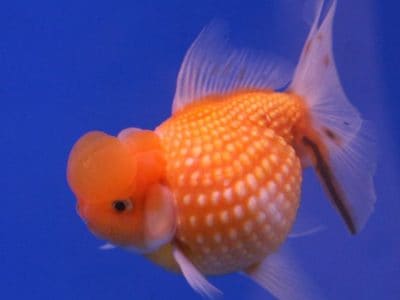
Fish
Respire through the gills on their heads!
Newest Animals that Start with the Letter F
The most recently added Animals that start with the letter F.

Frizzle Chicken
Frizzle chickens are known for their frizzled feathers, which result from a genetic mutation.

Florida Mouse
It is the only mammal native to the state of Florida.

Furrow Bee
N/A
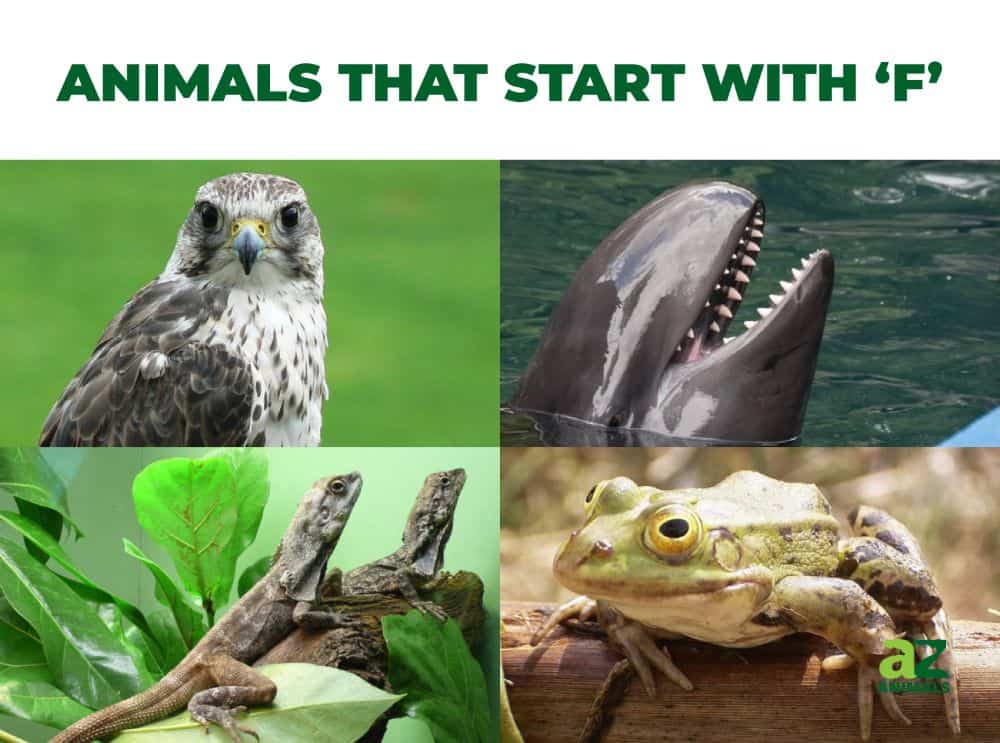
Animal by Letter Lists
- Animals that Start with A
- Animals that Start with B
- Animals that Start with C
- Animals that Start with D
- Animals that Start with E
- Animals that Start with F
- Animals that Start with G
- Animals that Start with H
- Animals that Start with I
- Animals that Start with J
- Animals that Start with K
- Animals that Start with L
- Animals that Start with M
- Animals that Start with N
- Animals that Start with O
- Animals that Start with P
- Animals that Start with Q
- Animals that Start with R
- Animals that Start with S
- Animals that Start with T
- Animals that Start with U
- Animals that Start with V
- Animals that Start with W
- Animals that Start with X
- Animals that Start with Y
- Animals that Start with Z
Thank you for reading! Have some feedback for us? Contact the AZ Animals editorial team.











